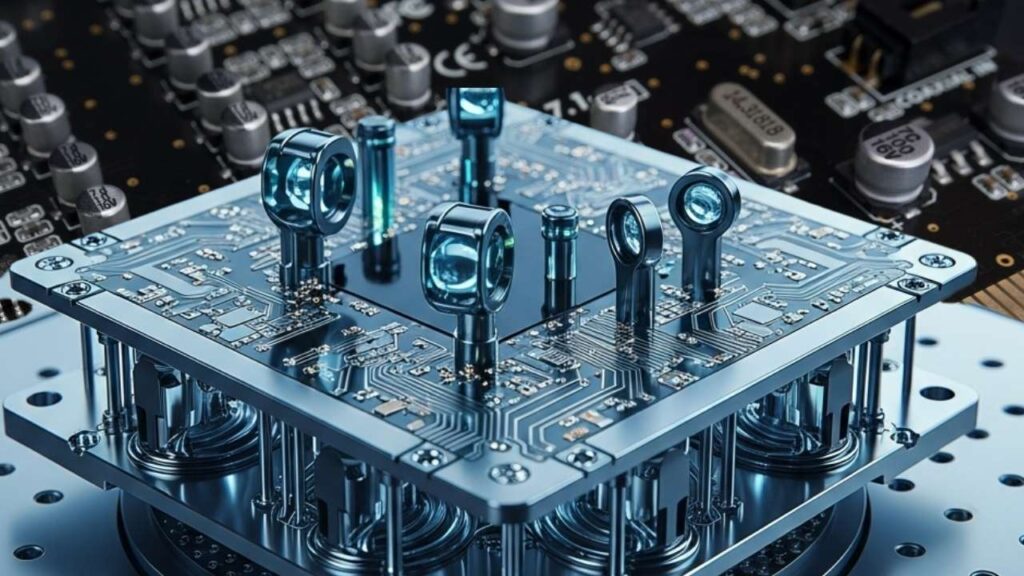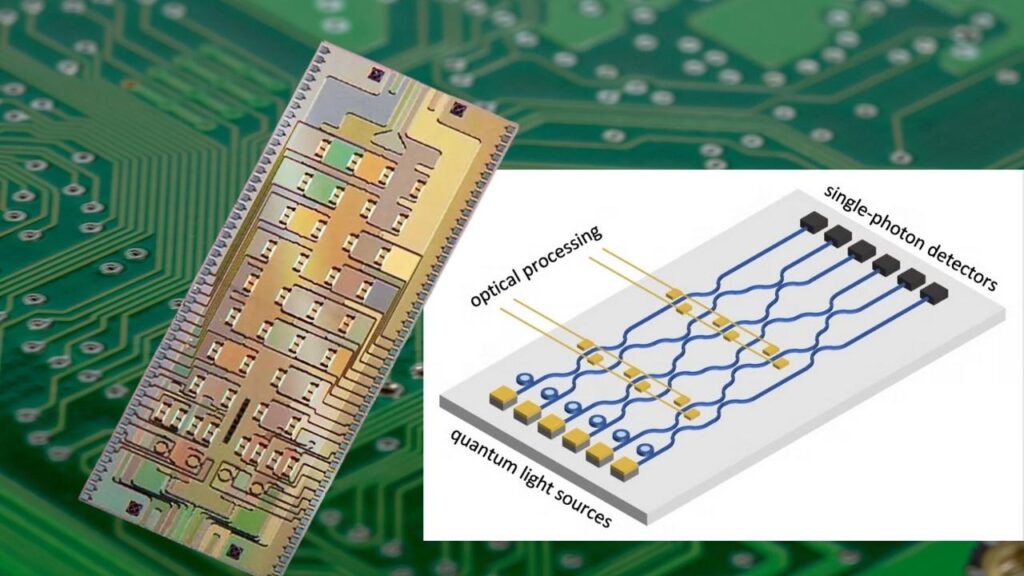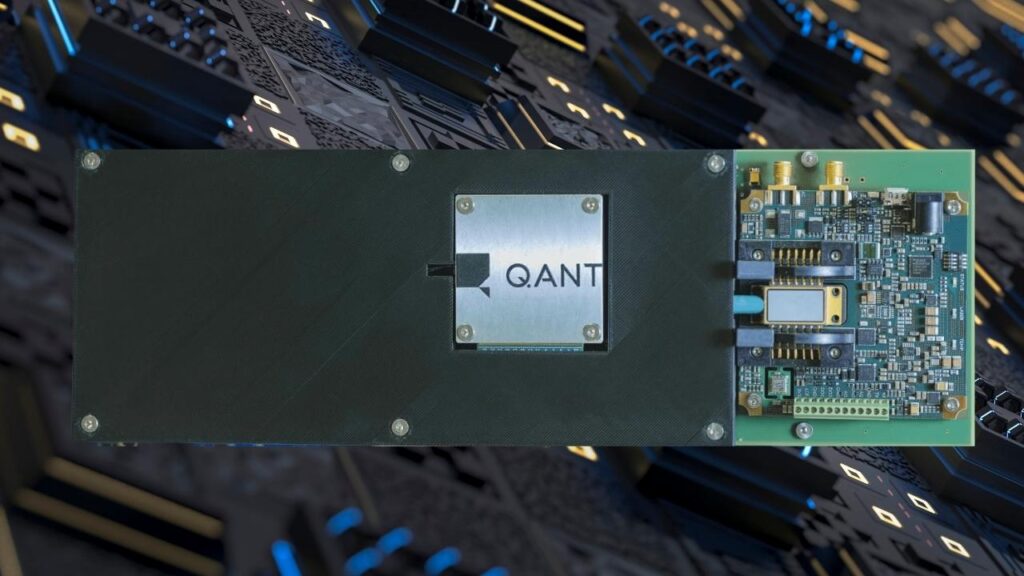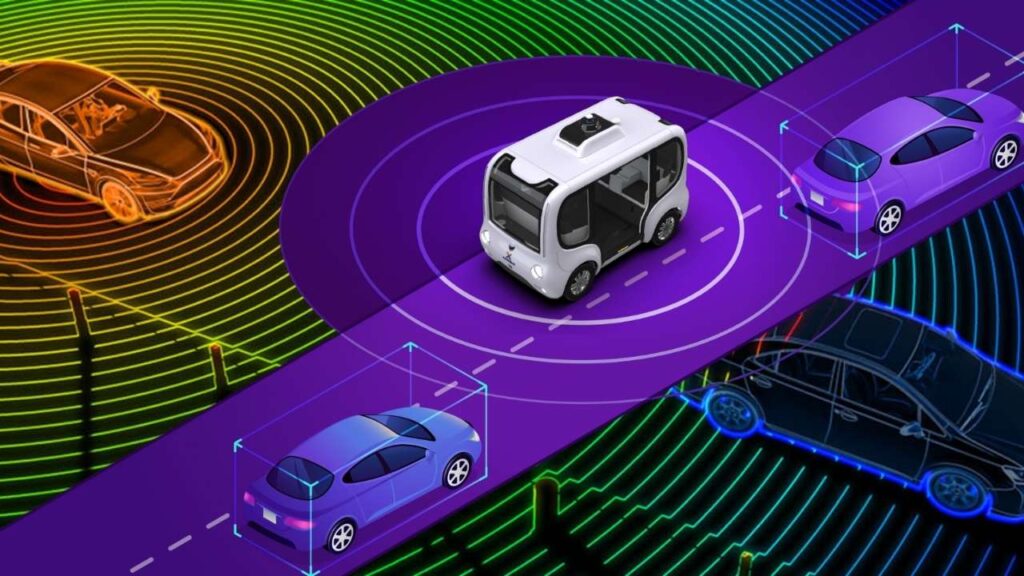Novel Photonic Quantum Chips Open Green AI Pathways: Artificial intelligence (AI) is reshaping our world in profound ways—from powering smart assistants and medical diagnostics to optimizing logistics and climate modeling. However, the vast computational resources AI demands come at a heavy environmental cost. Traditional electronic chips, made primarily of silicon transistors, consume significant energy and generate heat, contributing to rising operational costs and carbon emissions.

Enter novel photonic quantum chips—an innovative class of processors that use light (photons) rather than electricity (electrons) to perform computations. This breakthrough technology offers the promise of dramatically reducing AI’s energy footprint while boosting computational speed and efficiency. In this article, we’ll explore what photonic quantum chips are, why they matter for green AI, and how this emerging technology is set to transform industries and environmental sustainability.
Novel Photonic Quantum Chips Open Green AI Pathways
| Aspect | Details |
|---|---|
| Technology | Photonic quantum chips manipulate photons to process data using quantum and optical phenomena. |
| Energy Efficiency | Demonstrated energy efficiency gains of up to 30x compared to traditional CMOS chips for AI workloads. |
| Carbon Footprint Reduction | Photonic chips can reduce manufacturing carbon emissions by at least 4 times versus 28nm CMOS technology, per lifecycle analyses. |
| Applications | AI inference acceleration, telecommunications, lidar, data center networking, autonomous vehicles, and scientific simulations. |
| Industry Leaders | MIT research labs, Q.ANT (Germany), Lightmatter (USA), and other photonics startups advancing commercialization. |
| Investment & Growth | Lightmatter raised $400 million Series D in 2024 to scale production and deployment in data centers. |
| Reliable Resource | Official site for latest: Lightmatter |
Photonic quantum chips represent a revolutionary leap forward for AI computing, promising to dramatically enhance energy efficiency, reduce carbon emissions, and accelerate AI applications. This technology offers a sustainable future for the ever-growing demand for AI processing power, aligning cutting-edge quantum photonics with environmental responsibility.
As companies like Lightmatter and Q.ANT scale their innovations, supported by strong research and funding, photonic quantum chips will become an essential cornerstone of green AI infrastructure. Staying informed and prepared for this technological shift will be critical for professionals and organizations seeking to lead in AI innovation and sustainability.
What Are Photonic Quantum Chips?

To understand photonic quantum chips, we first need to grasp how traditional chips work. Conventional computer processors use electrons flowing through silicon transistors to carry out logical and arithmetic operations. While powerful, this approach has inherent physical limitations:
- Resistive Losses: Moving electrons through circuits generates heat, wasting energy.
- Speed Limits: Transistor switching speeds are capped by electronic properties.
- Scaling Challenges: Shrinking transistor sizes faces physical and economic constraints.
Photonic quantum chips take a different approach. They leverage photons—particles of light—to carry and process information. Light travels faster than electrons and experiences minimal resistance in optical media, allowing signals to pass through with very low energy loss. Additionally, by exploiting quantum mechanical phenomena such as superposition and interference, these chips can perform certain computations exponentially faster.
In essence: photonic quantum chips merge the power of quantum physics with the speed and efficiency of optics, offering a radically new computing paradigm.
How Do Photonic Quantum Chips Work?
Photonic quantum chips operate by encoding information in light pulses. These pulses are guided through tiny structures called optical waveguides etched into the chip substrate, much like fiber-optic cables. The chip contains components such as:
- Lasers: Generate coherent light.
- Beam Splitters and Interferometers: Direct and combine light beams to perform logic operations.
- Photodetectors: Convert optical signals back to electrical signals when needed.
Some photonic chips also incorporate nonlinear optical materials that enable active switching and modulation, crucial for processing complex AI algorithms.
A crucial advantage of photonics is the ability to perform parallel computation by multiplexing many wavelengths of light simultaneously (a technique called wavelength division multiplexing), increasing throughput far beyond electrical counterparts.
Quantum Effects in Photonics
Quantum properties enable photonic chips to harness:
- Superposition: Encoding multiple states simultaneously for parallel processing.
- Entanglement: Creating correlations between photons that can be exploited for specific algorithms.
- Quantum Interference: Enhancing computational outcomes through constructive and destructive interference.
These quantum effects are especially promising for AI inference tasks, where large-scale matrix operations are common.
Why Are Photonic Quantum Chips a Game-Changer for AI?
1. Massive Energy Savings
Energy efficiency is the standout benefit. Traditional silicon chips dissipate a lot of power due to electrical resistance and transistor switching losses. Photonic chips, on the other hand, consume far less energy per operation because photons travel without resistance.
For example, the startup Q.ANT, based in Germany, developed the LENA (Light Empowered Native Arithmetic) architecture. According to their technical demonstrations, LENA achieves up to 30 times higher energy efficiency compared to comparable CMOS chips, while supporting complex AI workloads like deep neural network inference.

This drastically reduces operational costs in data centers, which can spend millions annually on electricity and cooling.
2. Environmental Benefits
Manufacturing photonic chips also shows a favorable sustainability profile. A lifecycle assessment study published on arXiv reports that photonic chip fabrication generates at least four times less carbon emissions per unit area than advanced 28nm CMOS silicon chip fabrication. This is because photonic chips often require fewer processing steps and avoid certain energy-intensive doping and lithography processes.
Furthermore, photonic chips generate far less heat during operation, cutting cooling demands in data centers by a significant margin.
3. Scalability for Large AI Models
Photonic quantum chips can be integrated into Native Processing Units (NPUs) designed to plug into existing data center architectures. Companies like Lightmatter focus on building photonic NPUs optimized for AI inference at scale. This allows AI providers to scale up their compute clusters without proportional increases in energy use or heat output.
Real-World Applications of Photonic Quantum Chips
AI Inference Acceleration
AI inference—the phase where models analyze new data and make predictions—dominates AI workloads today. Photonic chips excel at accelerating matrix multiplications and other operations fundamental to inference, enabling real-time AI applications in:
- Speech recognition
- Natural language processing
- Image and video analytics
Telecommunications and Networking
Lightmatter and others are pioneering photonic chips to enhance data center networking bandwidth while cutting latency and power consumption. This is vital as 5G/6G networks and cloud services expand rapidly.
Autonomous Vehicles and LIDAR

LIDAR sensors, used for self-driving cars and drones, generate massive data streams needing rapid processing. Photonic chips’ speed and efficiency can boost LIDAR data interpretation and autonomous decision-making.
Scientific Simulations and Quantum Computing
Photonic quantum processors also find roles in simulating quantum systems for research, accelerating materials discovery, and cryptographic applications.
Industry Momentum and Future Prospects
Lightmatter’s $400 Million Funding Milestone
In October 2024, Lightmatter raised $400 million in Series D funding, highlighting investor confidence in photonic AI chips. The company’s valuation soared to $4.4 billion as it scales manufacturing and deploys chips into large cloud data centers. Lightmatter’s leadership anticipates commercial photonic AI chips becoming mainstream within 3-5 years.
Academic and Industry Collaboration
Academic research groups at MIT, Stanford, and European institutions continue to push photonic quantum chip technology forward. These efforts focus on improving fabrication techniques, integrating active quantum elements, and refining algorithms optimized for photonic hardware.
Challenges to Overcome
Despite exciting progress, several hurdles remain:
- Manufacturing Complexity: Photonic chip fabrication demands precise control over optical components.
- Integration: Combining photonic chips with existing electronic systems requires innovative hybrid architectures.
- Software Ecosystem: AI frameworks and compilers need optimization to fully exploit photonic hardware capabilities.
Step-by-Step Guide: How to Get Started with Photonic Quantum Chips in AI
Step 1: Build a Foundation in Photonics and Quantum Computing
- Study basic optics principles: light propagation, interference, and modulation.
- Explore quantum mechanics fundamentals relevant to computation.
Step 2: Understand Current AI Hardware and Its Limits
- Review CPU, GPU, and TPU architectures.
- Learn about CMOS scaling challenges and energy inefficiencies.
Step 3: Explore Photonic Chip Architectures
- Research companies like Q.ANT and Lightmatter.
- Analyze photonic chip whitepapers and technical briefs.
Step 4: Evaluate Environmental Impact and Sustainability Data
- Read lifecycle analyses comparing photonic and silicon chips.
- Understand data center power and cooling dynamics.
Step 5: Follow Industry Trends and Research
- Monitor funding news and product announcements.
- Join professional forums and attend conferences like CLEO and Photonics West.
Attosecond ‘Clock’ Measures Electron Tunneling Time With Unmatched Precision
New Polymer Breakthrough Boosts Durability and Sustainability Using Green Chemistry
Physicists Recreate Extreme Quantum Vacuum Conditions in the Lab — A New Era for Particle Physics
FAQs About Novel Photonic Quantum Chips Open Green AI Pathways
Q1: When will photonic quantum chips be available for commercial AI use?
Answer: Prototype deployments are underway, with broader commercial availability expected within 3-5 years as manufacturing scales and software ecosystems mature.
Q2: How do photonic chips handle AI model training?
Answer: Currently, photonic chips are best suited for AI inference rather than training, which requires large-scale precision. However, research is ongoing to extend their capabilities.
Q3: Can photonic chips replace GPUs and TPUs?
Answer: Photonic chips are likely to complement rather than fully replace traditional processors initially, offering specialized acceleration where energy efficiency and speed are critical.
Q4: What is the main obstacle to mass adoption?
Answer: The complexity of fabrication and integrating photonic chips with existing electronic systems remains the primary challenge.






